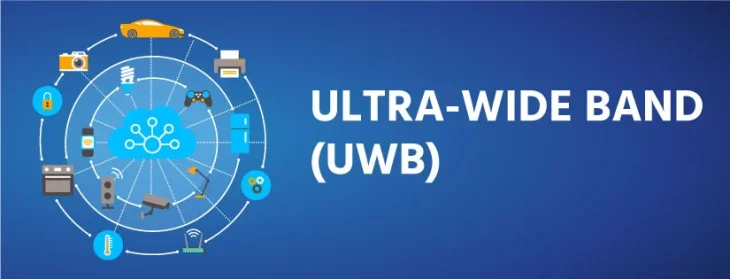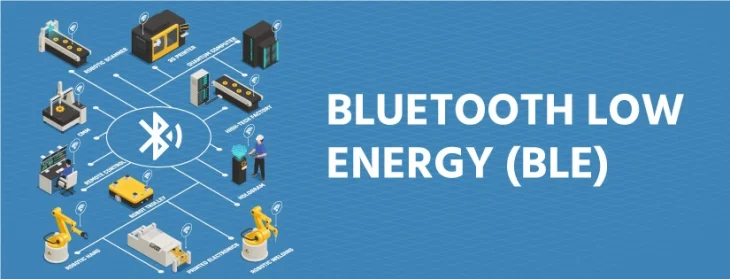How intelligent vision tracking helps forklift safety
When you step into a warehouse, you are most likely to witness miniature trucks moving around carrying materials from one place to another called forklifts. As much fun these little vehicles may seem, forklifts are associated with almost 90,000 accidents every year in the United States alone, out of which one fatal accident occurs approximately every 5-6 days. Some of the more common examples of forklift accidents are such as being crushed by forklift or forklift falling off an edge with the driver receiving serious injury. The downsides of warehouse vehicle activity have been analyzed and forklift has undergone significant improvements over the last decade, all thanks to the introduction of intelligent vision tracking forklift monitoring system. These systems are capable of tracking, recording, and projecting important real-time data to warehouse supervisors, and vehicle operators, which ultimately leads to minimizing workplace injuries and damage-related costs. To ensure the seamless functioning of such systems and employ the intelligent tracking feature, it is vital to understand their operation and perks they bring in for a business. Intelligent computer vision for forklift monitoring The key player in vision tracking of forklift is Artificial Intelligence (AI). AI applies two aspects into this namely: computer vision and deep learning. Computer vision refers to camera caught images processed in software. The mini-computers and cameras are installed and they provide their connection to the cloud for real-time alerting and reporting. They observe and record all the action along with taking pictures. Unlike security camera which requires humans to review thousands of images over long hours, computer vision implements AI to markdown significant events of interest/concerns such as a vehicle left unattended for a long time, debris in the truck bed, a person not in proper attire in the designated area, etc. The deep learning helps us to detect, recognize, and anticipate probable scenarios with absolute accuracy and reliability. The system can distinguish a person in an image from a pile of goods. The system is also able to recognize a forklift operator’s state by focusing on his body language and churning out possible outcomes. From identifying common carelessness such as hands not on wheels to keeping a check on warehouse safety standards, intelligent vision forklift monitoring system acts as an artificial warehouse manager of its own. The system not only detects and records an incident but also analyses and learns the reason for the same. The captured data helps it to identify the same occurrence again in the future and display a warning signal if it anticipates a similar incident is about to repeat.. The benefits of intelligent tracking and monitoring of forklift The benefits of intelligent tracking and monitoring of forklift Forklift monitoring has witnessed big changes over the years with the introduction of access settings which includes swipe cards or access pins to prevent unauthorized or unwarranted usage of forklifts. The constant surveillance and data capturing means lesser chance of mishaps and overall better security in the warehouse. This compels forklift operators to be accountable for their job, hence increasing productivity. A breakthrough aspect of smart vision tracking is the amalgamation with the Internet of Things (IoT). As a result of IoT, forklifts come with varied hardware and software products such as LCD screens. These days, it is mandatory for the forklift operator to abide by compliance and safety process and IoT happens to be one of the key points in a pre-start checklist. Giving a wrong answer or any shortcoming in compliance will have the forklift vehicle locked, preventing any further usage by the concerned driver. The following points summarize how computer vision tracking of forklifts is raising safety standards: Intelligent Forklift tracking systems have created a more professional, smooth, and safer workspace in the industry. The data from these systems enable supervisors and managers to measure key performance indicators and check safety. Unmanned AI-driven forklifts are already under usage on a significant scale in many countries. With years, more and more high-tech monitoring systems are going to come with increased efficiency. www.onetrack.ai/post/how-computer-vision-and-deep-learning-improve-forklift-safety www.inboundlogistics.com/cms/article/holman-logistics-uses-artificial-intelligence-to-increase-forklift-safety/ www.lencrowforklifts.com.au/news/understanding-forklift-safety-and-monitoring-systems-effectively-in-your-business/ Community, Nasscom Insights Initiative
Read MoreThe Machine Vision industry: Track and Trace
The industrial revolution sure did lay down the importance of manufacturing’s primary aspect, supply chain, and logistics. The constant manufacturing of goods, shipment, storage, the influx of commodities, tracking, tracing, labeling is quite the herculean task. Historically, tracing a product through a complicated supply chain has been a time taking and sometimes painful process, akin to finding a needle in a haystack. Whether it is a complex array of a global supply chain or individual process in a single facility, tracking and tracing were incredibly difficult, until a modern technological solution known as Machine Vision came up. Machine Vision systems, which are also known as intelligent vision systems, facilitate product tracing through a nexus of supply chains while also setting up an automated system to gain accessibility into the production of both self and suppliers/customers. The Growth of Vision-Based Track and Trace Solutions Machine Vision track and trace market are estimated to reach a value of $3.90 billion by 2023, as per a reputed market research firm growing at a compound annual growth rate of 19%. Much of this estimation can be attributed to regulatory pressure and accountability, to prevent product recalls and quality. As per global association for vision information (AIA), industry initiatives such as The Produce Traceability Initiative, are encouraging for further implementation of vision-based track & trace applications by pulling in several parties from various domains and envisioning a more effective vision-based industry. This growth lays down a generous amount of opportunities for innovative machine vision OEMs to mark their territory in such a rapidly growing industry. The underlying principle of vision tracking Machine vision track and trace solutions have introduced the most inclusive way to identify & track commodities as they move through complex global supply chains. As a result, there is a growing number of different industries that are adopting machine vision as their one-stop solution for track and trace operations. For example, due to occurrences of instrument misplacement and hospital-contracted infections, the medical device industry has implemented track and trace systems to ensure safety and wellbeing. The food and beverage industry has extensively used machine vision track and trace to record point of origin of products and ingredients to address quality issues and rectify them. Typically, pharmaceutical firms observe stringent rules and regulations to ensure their products can be tracked and traced from the production line to the end-user. Here is how they implement vision-based track and trace: Apart from track and trace, the manufacturing industry has witnessed a vast application of diverse machine vision solutions in many ways As machine vision technology makes its footfall in more and more industries, the track and trace solutions are most likely to be at the forefront of this growing presence, contributing to supply chain visibility and product innovation. This pioneering technology has trailblazed its way towards the manufacturing industry vanguard and proved to be a much sought after system solution to scale all sorts of operations. Reference: www.devteam.space/blog/10-examples-of-using-machine-vision-in-manufacturing/#eight Global Association for Vision Information
Read MoreWhat is Bluetooth Low Energy (BLE) in Intelligent Sensing
There is a difference between Bluetooth Low Energy and Bluetooth. If you’re interested in using BLE technology for beacons, there are a few different components that you should know about. These components all help create beacons that use Bluetooth Low Energy to communicate. This article will explain each component and help you decide whether you need them in your business. Over the last 9 years, Bluetooth low energy enabled devices have gained traction of the IoT market worldwide. The following statistic shows forecast market volume of Bluetooth low energy devices worldwide, from 2013 to 2020. Source: Statista What is Bluetooth Low Energy Bluetooth Low Energy, also known as BLE, is a wireless technology that uses the 2.4 GHz radio band to communicate with other devices. A BLE communicates by broadcasting data. It is a form of unidirectional communication in which two devices communicate without establishing a connection. Peripheral and central devices can use this type of communication for different purposes. Broadcasts are multicast, and a client device can receive them as long as it is nearby. This type of communication is not secure, but it has many applications. This wireless technology uses 40 separate frequency channels separated by two MHz. Three are primary advertisement channels, while the remaining 37 are secondary data channels. Bluetooth communication starts on the primary channels and offloads to the secondary ones. Low-energy Bluetooth is built into most new smartphones and tablets. Android phones and tablets may support BLE or a different version of Bluetooth. Bluetooth Classic devices may not work with BLE. The BLE specification defines a series of attributes called characteristics. These characteristics are similar to object-oriented language’s member variables. Representative characteristics include heart rate and volume. They can be Read-Only or Write-Only. Writing a new value to a characteristic is analogous to invoking a “setter” in an object-oriented language. Characteristic descriptors provide more information about the characteristics. These attributes are used to store information about the device. Difference between BLE and Bluetooth There are several differences between Bluetooth Low Energy and its older cousin, Bluetooth. Bluetooth Low Energy is based on a series of layers, including the Generic Attribute Profile (GATT), the Link Layer, and the Generic Access Profile (GAP). Each layer has different responsibilities and a particular method of communication, and a BLE device can implement more than one profile at once. While “classic” Bluetooth is intended for consumers, Bluetooth Low Energy is aimed at the industrial sector. It is designed to report small amounts of information in a short period. Because BLE uses less power, it has a lower acquisition cost and can be deployed more quickly. It also enables devices to operate for more extended periods before recharging. In addition to a lower acquisition cost, BLE devices can transmit more information over a wider area than Bluetooth. The underlying technology behind Bluetooth low energy is a highly versatile wireless communication standard. It can communicate with many different interfaces and devices. Bluetooth standard requires a high battery capacity, and frequent recharges, whereas Bluetooth low-energy devices can run for years on a small battery. Bluetooth low energy is also very fast at transferring complex data. It means it will be easier for businesses to implement low-power applications and increase productivity. Another difference between BLE and Bluetooth is the number of channels they use for communication. Standard Bluetooth uses a fixed channel, and BLE uses 40 two-MHz channels. BLE uses a gaussian frequency shift modulation (GFSM) to smooth out data pulses and reduce interference. A direct sequence spread spectrum is also used to minimize interference among BLE devices. This feature is available in most smartphones, tablets, and other smart devices. How does BLE work It has two main layers – a physical layer and a link layer. The physical layer communicates with the other devices, while the link layer is responsible for encoding and decoding data. Bluetooth Low Energy devices also use the L2CAP protocol to ensure communication security. When Bluetooth connects two devices, a connection event is initiated. This event enables the devices to exchange user data. These packets are sent out at a fixed interval called Connection Interval. The two devices exchange data at every connection event. Each device transmits data once in a while and can communicate with each other over several channels. The devices use 37 channels for data and three channels for advertisement. BLE uses a General Attribute Profile (GATT) to communicate over a Bluetooth link. This GATT profile is the basis for most current BLE application profiles. You can use several other profiles defined by the Bluetooth SIG, and your device can implement as many as it supports. Once it helps the GATT profile, it can communicate with other BLE devices. Bluetooth low-energy beacons Bluetooth low energy beacons are devices that operate on Bluetooth low energy principle. They are like machine emitters that constantly emit radio signals over short, regular intervals for other devices to receive. The information transmitted is in the form of letters and numbers. BLW beacons consist of a CPU, lithium-ion batteries, and a radio. They contain a unique ID transmitted to the receiving device, which then forwards it to a designated cloud server to retrieve information in that beacon. Different beacon applications have additional coexistence requirements. Some may only require centimeter-scale ranges, while others require multiple hundreds of meters. The Bluetooth low energy core specification allows for a maximum of 10 dBm, so you may need to experiment with your beacons to determine which ranges are best for your application. You may also need to consider how many beacons you must operate simultaneously. One of the primary uses of beacons is in advertising, and the technology is already widely used for advertising. Advertisements can promote products and services, and beacons can run on a coin-cell battery for years. Depending on their usage, beacons can transmit both static and dynamic data. These beacons are easy to install and use. Typically, they can run for years on a single coin-cell battery. The technology that
Read MoreUltra-Wide Band (UWB): The Wireless Tech Behind Intelligent Sensing
In an increasingly interconnected world, wireless technology has become the backbone of our modern lives. From smartphones to smart homes and the Internet of Things (IoT), we rely on wireless communication for seamless connectivity. Among the many wireless technologies that have emerged, Ultra-Wide Band (UWB) stands out as a revolutionary technology with the potential to transform intelligent sensing applications. In this article, we will delve into the world of UWB, exploring its principles, applications, and the exciting future it promises. Understanding UWB Technology Ultra-wideband, as the name suggests, utilizes an exceptionally wide spectrum of radio frequencies for communication. Unlike traditional wireless technologies like Wi-Fi and Bluetooth, which operate within narrow frequency bands, UWB spreads its signals across an extremely wide range of frequencies. In essence, UWB sends out brief, low-power pulses of radio waves that span a broad spectrum. This unique approach provides several key advantages that make UWB technology ideal for intelligent sensing applications. ● Precise Location Tracking One of the most prominent features of UWB is its ability to provide highly accurate and real-time location tracking. Traditional GPS systems struggle with indoor tracking and can’t offer the precision needed for applications like asset tracking, indoor navigation, and even virtual reality experiences. UWB fills this gap by enabling centimetre-level accuracy in tracking. It achieves this by measuring the time it takes for a UWB signal to travel between two devices with synchronized clocks. The result is a location accuracy that far surpasses other wireless technologies. ● Impulse Radio Technology At the heart of UWB lies its Impulse Radio technology. Instead of continuous transmission like in traditional wireless systems, UWB devices transmit short, nanosecond-duration pulses. These pulses have a very low-duty cycle, meaning they are active for only a fraction of the time. This not only conserves power but also reduces interference with other wireless systems. The short pulses enable UWB to achieve high data rates while operating in a crowded radio frequency spectrum. Also read Intelligent Vision in the Mining Industry. UWB in Intelligent Sensing Applications The unique properties of UWB technology make it a game-changer in the field of intelligent sensing. Its unparalleled precision in location tracking and low interference open the door to a multitude of exciting applications across various industries. Let’s explore some of its most exciting applications: 1.Smart Homes and IoT: UWB enables precise indoor positioning, making it perfect for smart home automation and IoT devices. Imagine your smart lights turning on as you enter a room or your thermostat adjusting the temperature based on your exact location within your home. UWB makes these scenarios not only possible but also highly efficient. 2.Healthcare: In healthcare, UWB can be used for patient monitoring, fall detection, and even contact tracing during pandemics. Its ability to accurately track the movement of patients within a healthcare facility ensures rapid response in case of emergencies. 3.Automotive Industry: UWB has made its way into the automotive industry, where it plays a critical role in advanced driver-assistance systems (ADAS). UWB-based sensors can detect the presence and precise location of objects around a vehicle, contributing to enhanced safety features like blind spot detection and collision avoidance. 4.Industrial Automation: In manufacturing and industrial settings, UWB enables precise asset tracking and monitoring. It can be used to keep tabs on tools, machinery, and inventory, streamlining operations and reducing downtime. 5.Virtual Reality and Gaming: UWB’s accurate positioning capabilities are a boon for virtual reality and gaming applications. Players can enjoy immersive experiences with minimal lag and precise movement tracking. Challenges and Future Developments While UWB holds immense promise, it is not without its challenges. One of the main concerns is regulatory compliance. Different regions have varying rules and restrictions on the use of UWB frequencies, and navigating this regulatory landscape can be complex for manufacturers. Additionally, the technology’s relatively high power consumption, compared to other low-power wireless protocols like Bluetooth Low Energy, is a consideration for battery-operated devices. However, ongoing research and development are addressing these challenges. Efforts to optimize UWB power consumption and improve interoperability with existing wireless technologies are underway. Furthermore, as UWB gains wider adoption, regulatory frameworks are likely to evolve to accommodate its unique capabilities. The future of UWB looks promising, with several developments on the horizon: 1.Integration with 5G: UWB can complement 5G networks by providing precise positioning and sensing capabilities. This synergy can lead to advanced applications in smart cities, public safety, and autonomous vehicles.2.Enhanced Security: UWB’s ability to accurately detect and identify devices can bolster security measures. It can be used for access control, securing smart homes, and preventing unauthorized access to sensitive areas.3.Augmented Reality (AR): UWB is poised to play a crucial role in the advancement of AR technology. It can enable more immersive and interactive AR experiences by providing precise location data for virtual objects.4.Standardization: The development of global UWB standards will facilitate interoperability and promote the widespread adoption of the technology. Standardization efforts are already underway, led by organizations like the Wi-Fi Alliance and the UWB Alliance. Also read What is Asset Tracking and What are its Benefits. Conclusion Ultra-wideband (UWB) technology is ushering in a new era of intelligent sensing. Its remarkable ability to provide centimetre-level accuracy in location tracking, combined with its potential for high data rates and low interference, makes it a powerful tool for a wide range of applications. From smart homes to healthcare, automotive safety, and gaming, UWB is set to revolutionize how we interact with the world around us. While there are challenges to overcome, ongoing research and development, along with evolving regulatory frameworks, are paving the way for UWB’s widespread adoption. As this technology continues to mature, we can expect to see even more innovative applications emerge, further cementing UWB’s place as a key enabler of the connected future. The future of intelligent sensing is indeed looking brighter with UWB leading the way. Experience the future of intelligent sensing with iNetra. Unlock unparalleled precision and accuracy in tracking, monitoring, and automation. Join us on this journey towards innovation and discover the limitless possibilities of Ultra-Wide Band technology. Transform your world with iNetra today!
Read MoreBLE and Beyond: Innovations in Intelligent Sensing Technologies
The use of technology and how we interact with our surroundings are both changing quickly. The development of intelligent sensing technologies, which are altering how we perceive and interact with the world around us, has been one of the most important recent developments. Bluetooth Low Energy (BLE), one of these developments, has been essential, although intelligent sensing encompasses much more than BLE. We’ll examine the most recent improvements in intelligent sensing technologies in this post, including BLE, and the fascinating advancements that lie beyond it. Understanding BLE and Its Impact Bluetooth Low Energy (BLE), also known as Bluetooth Smart, is a wireless communication technology that was introduced as a part of the Bluetooth 4.0 specification. Unlike traditional Bluetooth, BLE was designed with low power consumption in mind, making it ideal for applications where battery life is crucial.BLE’s low energy consumption, combined with its ability to transmit data over short distances, has made it a fundamental component in various industries. Also read Smart camera network – yesterday and today. Beyond BLE: Innovations in Intelligent Sensing While BLE has been a game-changer in the world of intelligent sensing, several other emerging technologies are pushing the boundaries of what’s possible. Let’s take a closer look at some of these innovations: Also read What is Bluetooth Low Energy (BLE) in Intelligent Sensing. Challenges and Considerations Intelligent sensing technologies continue to advance, there are several crucial challenges and considerations that must be addressed. Building a solid foundation for these innovations is essential to ensure their success and responsible use in the future. Let’s explore some key aspects to consider: Conclusion Intelligent sensing technologies have come a long way, with BLE playing a pivotal role in connecting devices and enabling the IoT. However, the world of intelligent sensing extends far beyond BLE, encompassing innovations such as LiDAR, radar sensing, machine learning, quantum sensors, environmental monitoring, and smart fabrics. These technologies are revolutionising industries, improving healthcare, enhancing consumer experiences, and contributing to a more sustainable future. As these technologies continue to evolve, it’s essential to address challenges related to privacy, interoperability, energy efficiency, and regulatory compliance to ensure their widespread adoption and responsible use. The future of intelligent sensing promises a world where our devices and environments are not only aware of our presence but also capable of responding intelligently to our needs. It’s an exciting time to be at the intersection of technology and innovation, as we witness the transformation of how we perceive and interact with the world around us. Experience the future of intelligent sensing with iNetra. Join us in shaping a world where technology understands your needs like never before. Explore our cutting-edge solutions today and embark on a journey towards a smarter, more connected tomorrow. Your world was made more intelligent with iNetra.
Read More


